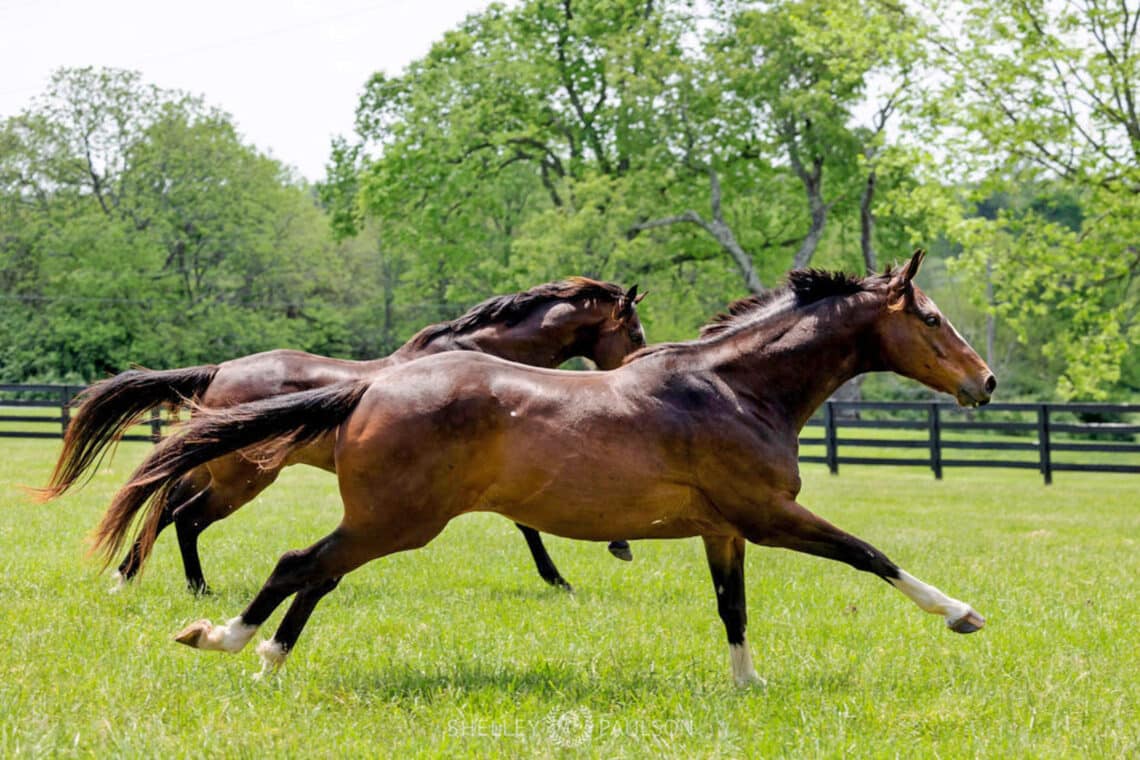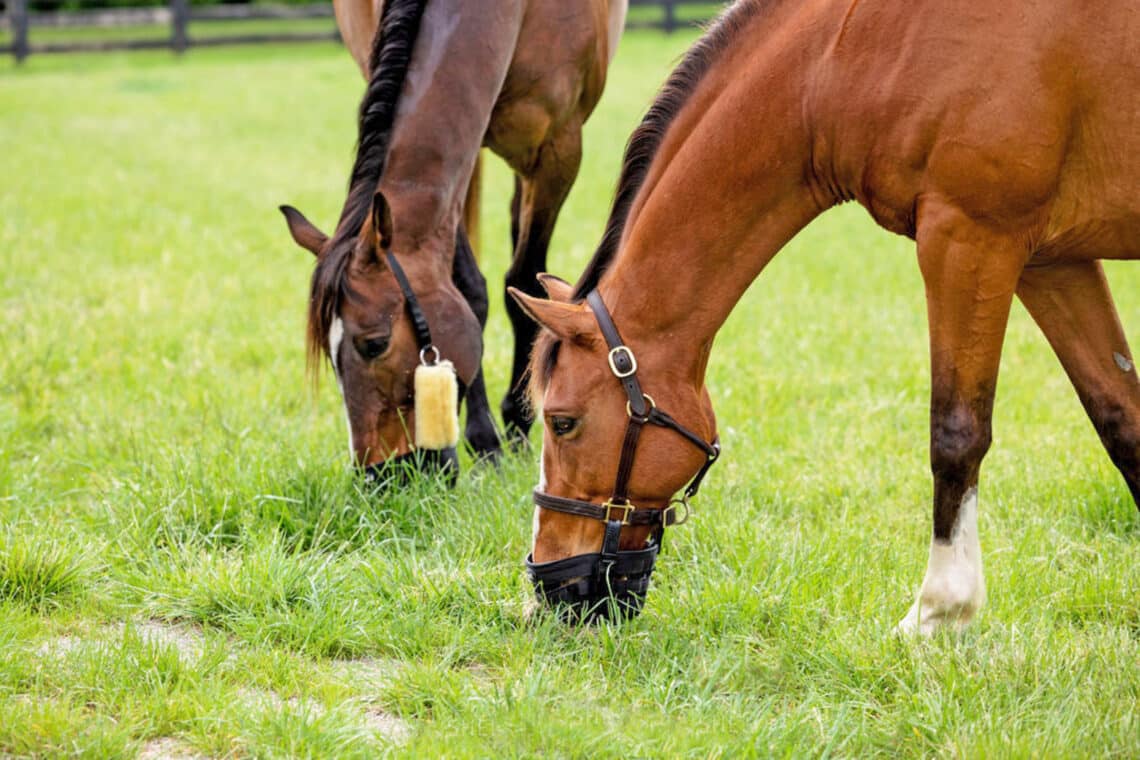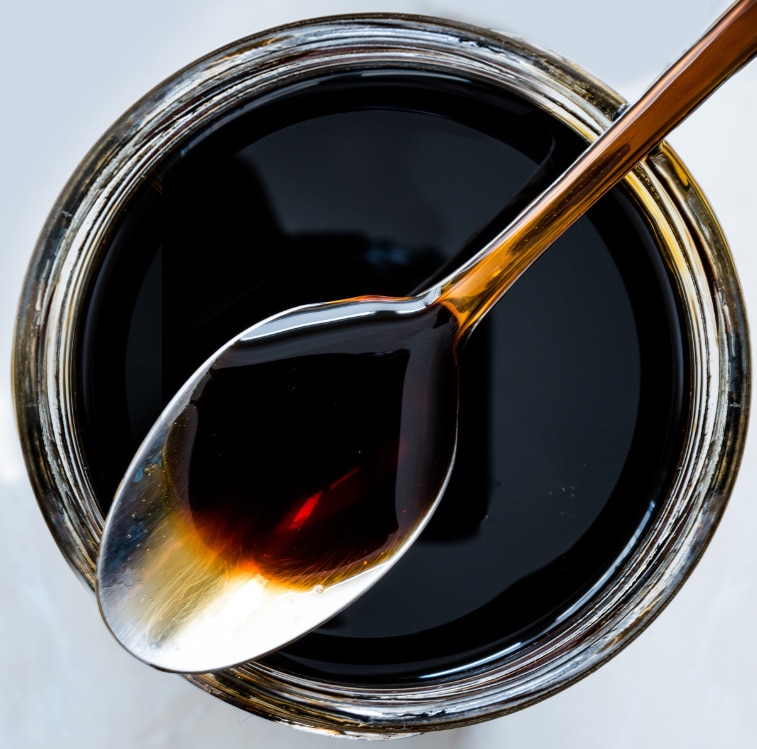
Credit Shelley Paulson Photography

Managing the risk of laminitis
Spring is in the air, and with it the risk of laminitis. Equine nutritionist Dr Clarissa Brown-Douglas has some suggestions to help prevent this serious welfare issue.
For most horse owners, the onset of spring is welcome, especially after such a wet winter! But for some, spring with its lovely green grass brings the risk of too much energy, crazy brains, and dreaded laminitis. While grass seems the most natural of feedstuffs for horses and ponies, it can stir up health concerns in susceptible individuals.
Despite its nutritional benefits, spring grass can be high in sugars. Levels of non-structural carbohydrates (NSC) as high as 40% dry matter have been recorded in certain grasses, with cool season perennials, such as ryegrass, especially predisposed to accumulating sugars. Most horse owners are well aware of the increased risk of laminitis when grass begins to grow in the spring, which provides abundant forage high in moisture and NSC, but low in fibre.

Focus on laminitis
Laminitis is a painful inflammatory condition of the hoof and is a serious welfare issue in horses and ponies. Several modes of action linked to nutrition may cause laminitis depending on the individual horse and its susceptibility. One of the greatest risk factors is insulin dysregulation. Horses and ponies diagnosed with pituitary pars intermedia dysfunction (PPID or Cushings disease) and equine metabolic syndrome (EMS) are prone to insulin dysregulation and laminitis.
Nutritional countermeasures may, however, keep susceptible horses from developing laminitis, especially during the spring. Dietary management of susceptible horses focusses on restricting the intake of NSC, namely sugars, starches, and fructans, which usually means limiting access to pasture and providing alternative sources of nutrition.
Consumption of high-sugar feeds including lush pasture causes a rise in blood glucose, which triggers a release of insulin from the pancreas to clear the glucose from the blood. If a horse or pony is insulin resistant, this mechanism malfunctions, so the pancreas releases more insulin, gradually increasing the levels in the bloodstream. This hyperinsulinemia triggers alterations in blood flow to the hoof, boosts the expression of lamellar pro-inflammatory cytokines that activate inflammation, and alters glucose metabolism within the hoof lamellae.
Another chain of events linked to hoof inflammation involves the hindgut. When a horse consumes excessive amounts of spring grass, some of the sugars and fructans can bypass digestion in the small intestine and end up in the hindgut. This produces a bloom of lactate-producing gram-negative bacteria that rapidly ferments the sugar and fructans. The byproduct of this fermentation is increasing amounts of lactic acid, which drop the pH of the hindgut. As the pH decreases, other microbes die, releasing endotoxins, reactive amines and exotoxins into the bloodstream. These are thought to adversely affect circulation, increase inflammation, and destroy lamellar basement membranes in the hooves, causing laminitis.
Dietary management is an important factor in preventing laminitis and here are some general points of consideration for at-risk horses:
Fibre first
Diets should be based on appropriate forage, such as grass hay or legume hay (or hay substitute) with a low NSC content (less than 10-12% dry matter) fed at a rate of approximately 1.5-2% body weight. Mature hay typically has lower digestible energy and NSC content when compared to less mature grass hay or prime cut lucerne and clover. NSC content also depends on environmental factors during growth and harvesting. Whenever possible, a forage analysis should be performed on hay intended for horses with PPID and EMS. Soaking hay for 30 to 60 minutes before feeding is thought to leach sugars and fructans, and may be prudent in the absence of a forage analysis.
Control access to pasture
In addition to glucose and fructose, which are sugars that are easily digested by horses, many grasses contain another form of sugar that can’t be broken down in the small intestine. Fructans are formed when several fructose molecules are bonded together, creating chains that are resistant to the digestive enzymes in the stomach and small intestine. When consumed by horses, fructans pass undigested into the hindgut and undergo rapid bacterial fermentation, upsetting the delicate pH balance as lactic acid production rises. This disruption in acidity, termed hind-gut acidosis is usually followed by an inflammatory response, which is a common trigger of colic and has been linked to laminitis in grazing horses.
Fructans are more of a threat at some times of the year than others. Grasses have more available fructans during periods of rapid growth (springtime and also rainy autumn days after hot summer weather), and at times when grass is stressed (overgrazing, drought, high salinity in soil). Fructan levels change with the time of day, generally being highest in late afternoon and evening, and lowest in the very early morning hours. The amount of fructan in grass also varies within the plant’s tissues. Sugar is produced by photosynthesis during daylight hours, while at night, the plant uses this energy to grow.
However, cooler nights cause grass growth to slow, with the sugar not utilised as fast as it is produced. The grass accumulates sugars in the stem base in an attempt to fuel regrowth, resulting in plants that are both more easily digested and sweeter tasting to hungry horses (this is often termed ‘stressed pasture’). Cool nighttime temperatures and warm days, overgrazing, mowing, or several dry days followed by rainfall can all lead to stressed pasture and the accumulation of sugars in the grass, resulting in increased NSC intake as horses graze.
For horses prone to laminitis, it is important to restrict or avoid grazing when night temperatures are below 5°C, followed by sunny days. Sensitive horses should graze late at night or very early in the morning, with horses removed from pasture by mid-morning at the latest. In situations where the horse can’t be removed from the pasture, it is advisable to use a grazing muzzle. Horses that show sensitivity to fructans may benefit from the addition of a hind gut buffer in their diet. By stabilising the pH of the hindgut, there is a decrease in the risk of hindgut acidosis, colic, laminitis and other associated disorders.
Don’t forget balanced nutrition
Hay (and pasture) can be notoriously low in essential trace minerals including zinc and copper, so regardless of the season, a balanced vitamin and mineral supplement, or feed balancer which contains a quality vitamin and mineral premix is a handy insurance policy to top up vitamins and minerals in horses on fibre-only diets.
Laminitic horses must avoid feedstuffs high in NSC, such as straight cereal grains (barley and oats, for example) or sweet feeds. Sweet feeds that contain primarily cereal grains and molasses can boost the NSC content to 45 to 50%.
For lean horses or horses in work, but still at risk of laminitis, calories can be safely provided by fat (vegetable oil, stabilised rice bran) and fermentable fibre (beet pulp, soy hulls).
Combating inflammation
In humans, omega-3 fatty acid supplementation is a therapeutic strategy used for metabolic dysfunction because it improves insulin sensitivity and reduces inflammation. A study in horses indicates that DHA (DHA and EPA are two of the most important omega-3 fatty acids) alters circulating fatty acids, modulates metabolic parameters, and may reduce inflammation in horses with metabolic syndrome. To combat inflammation, supplement with a marine-derived source of the long chain omega-3 fatty acids DHA and EPA.
Because there are many causes of laminitis, the disease is not completely preventable, regardless of vigilance. We recommend working with your veterinarian to plan management strategies based on the individual horse or pony and its risk factors for laminitis. We also recommend having a qualified equine nutritionist design a safe and balanced diet to meet your horse’s individual needs.
Visit Kentucky Equine Research and Equinews™ for information on all equine nutrition-related topics.



